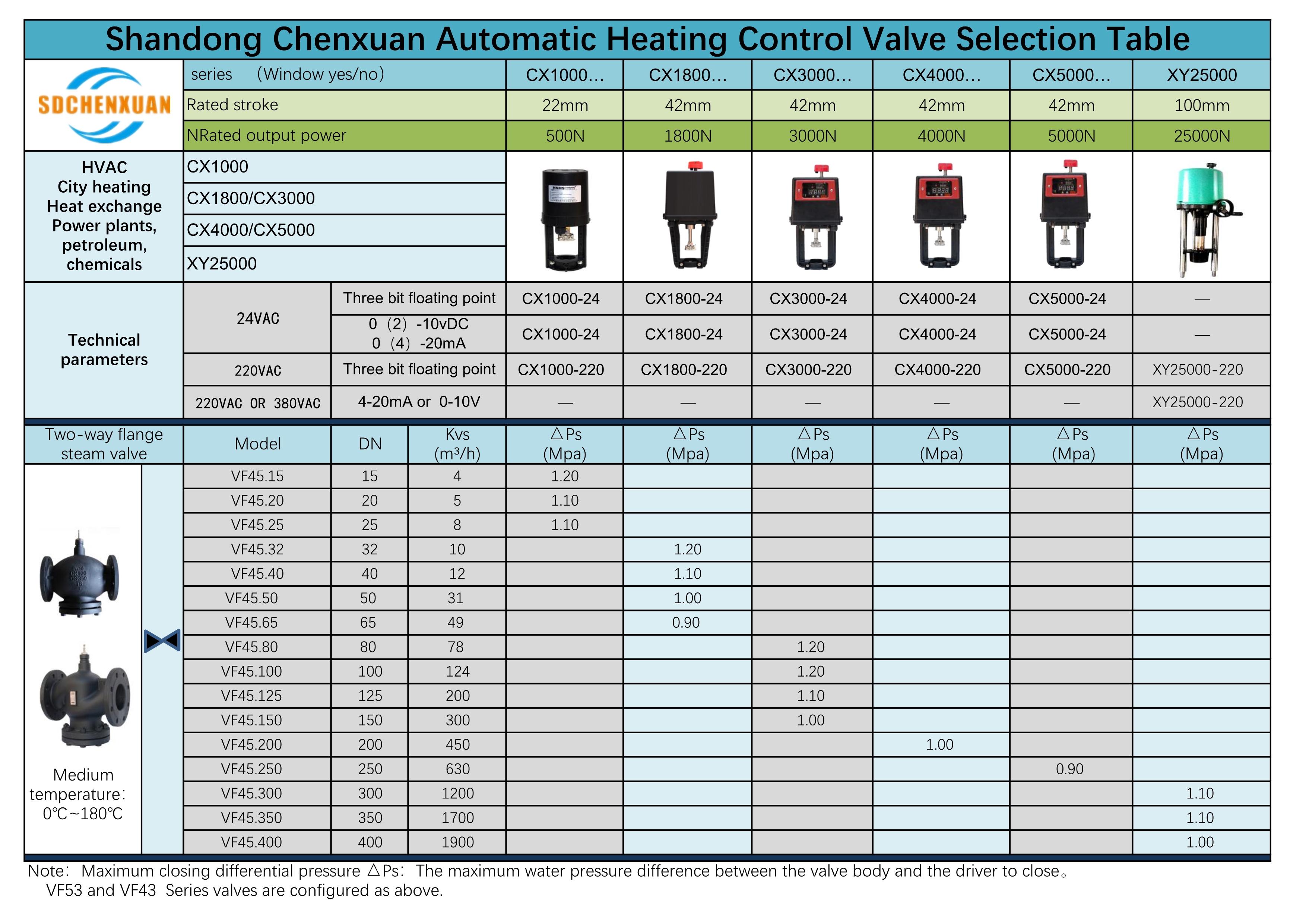Electric Temperature Control Valve
Electric temperature control valve is a typical application of electric flow control valve in the field of temperature control. Its basic principle is to control the outlet temperature of equipment by controlling the inlet flow of heat exchanger, air conditioning unit or other heat and cold equipment and primary heat ( cold ) medium. When the load changes, the flow rate is adjusted by changing the valve opening degree to eliminate the influence caused by load fluctuation and restore the temperature to the set value.
Classification of Siemens Temperature Control Valves
A. Siemens original - electric temperature control valve
B. Mixed installation ( Siemens ) - electric temperature control valve (with valve body manufactured by SDCHENXUAN)
Composition of Siemens Temperature Control Valve
Controller:
Accept the temperature signal and output 0...10V control signal through P/PI/PID operation. Common models of Siemens controllers include RWD60RWD 62RWD68RLU36RMZ730 - b, etc.
Actuator:
Accept the adjustment signal sent by the controller, accurately adjust the valve opening, stable operation, optional power-off reset, 3P or analog adjustment, 230DCV or 24DCV power supply.
The common models of Siemens actuators are SUA21SQS65SSC85 SAX61SKD62SKB62SKC62, etc.
The common models of SDCHENXUAN actuators are CX1000, CX1800, CX3000, CX4000, CX5000, XY1200, XY3500, XY4500, CX202, CX204, etc.
Explosion-proof type CX402,CX404,CX408,CX410 etc.
Valve body:
The executor that regulates the flow of medium is matched with the executor to form an electric regulating valve. Siemens valves are divided into: copper valves, cast iron valves, ductile iron valves, cast steel valves; According to the connection mode, it can be divided into: threaded connection and flange connection valves; According to the medium used, it can be divided into water valve and steam valve. Diameter DN15 ... DN150.(chenxuan DN15-DN400)
Sensors:
The temperature of the medium is measured in various types. According to the installation position, it can be divided into immersion temperature sensor, binding temperature sensor, air duct temperature sensor, indoor temperature sensor, outdoor temperature sensor and other types.
Characteristics of Siemens Temperature Control Valve
Advantages:
A. With proportional integral ( PI ) or proportional integral and differential ( PID ) adjustment functions, the control is stable and accurate.
B. Aiming at different field working conditions, the control parameters can be flexibly adjusted to achieve system optimization.
C. The controller can read the current temperature value and observe the working state of the valve.
D. Extensible functions, such as remote setting, temperature compensation, overtemperature alarm, heat metering, automatic meter reading, remote transmission, etc.
E. most models can be operated manually when power is cut off.
